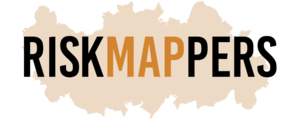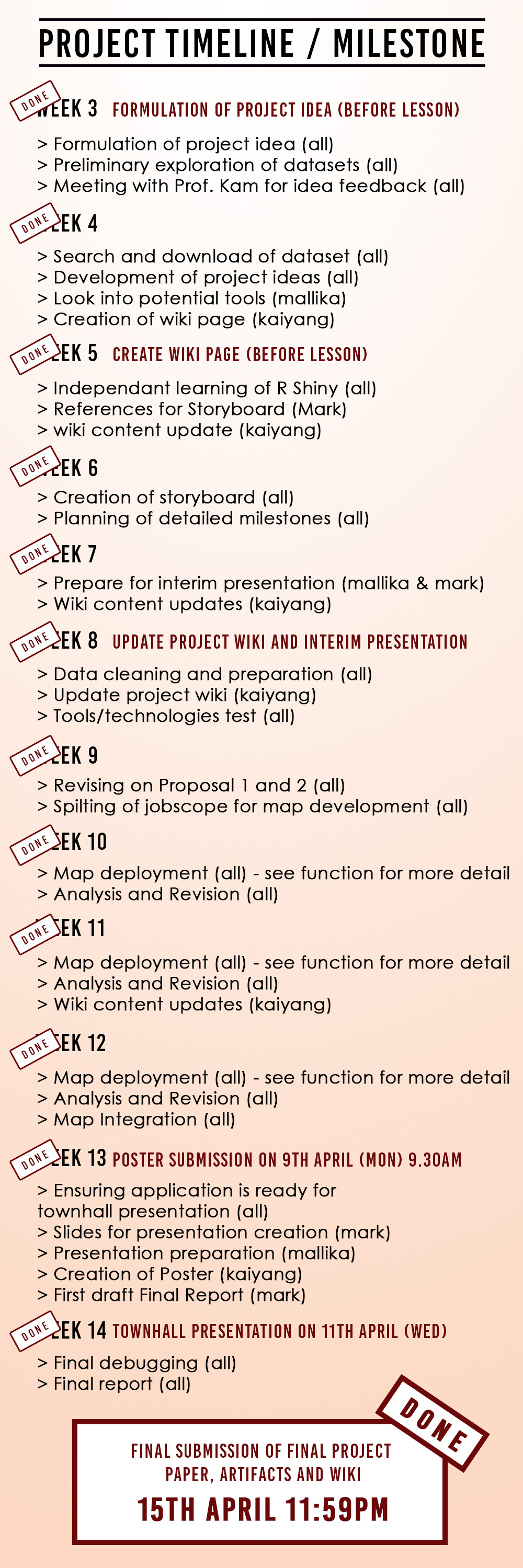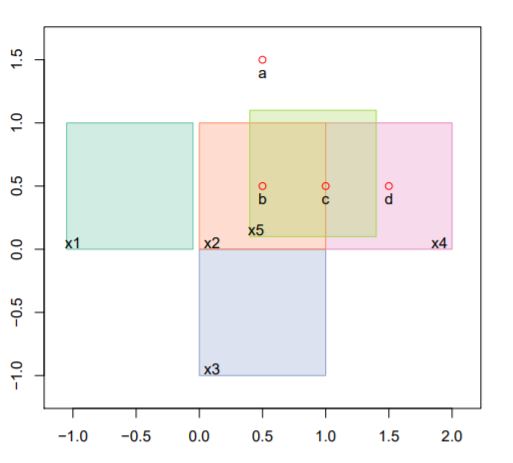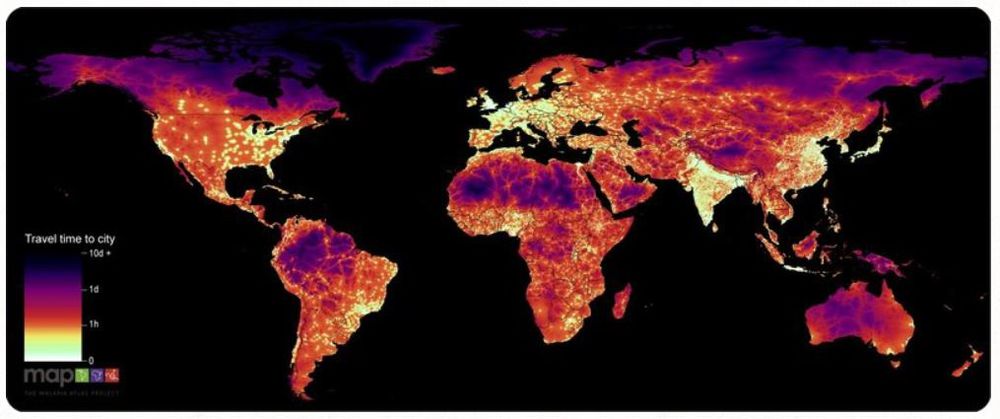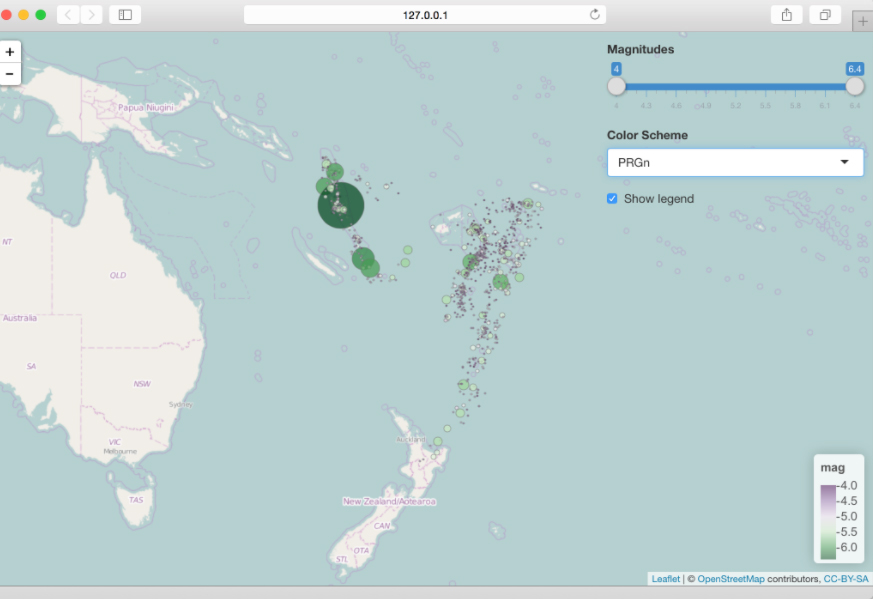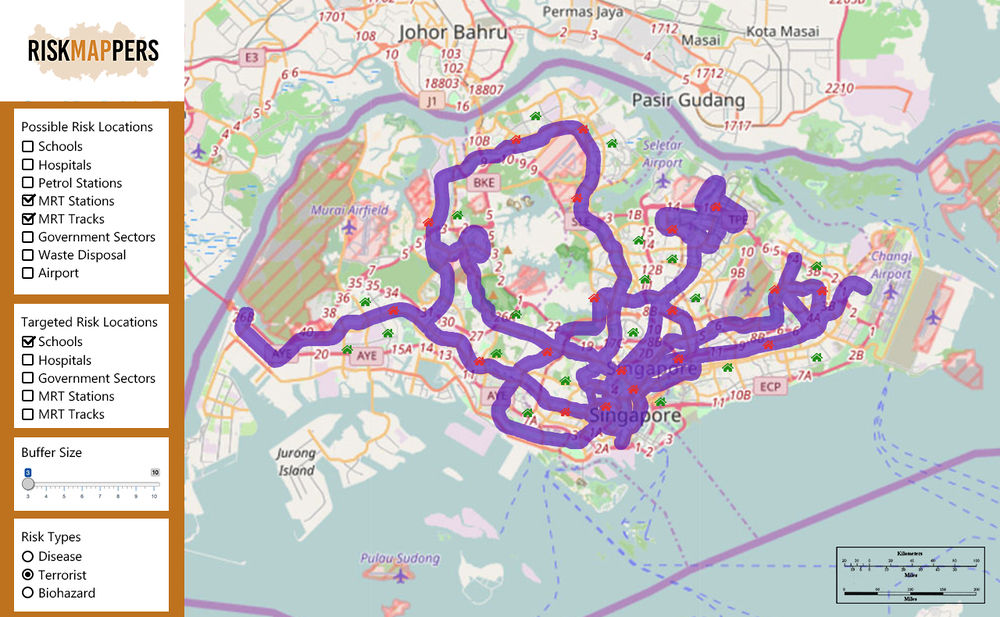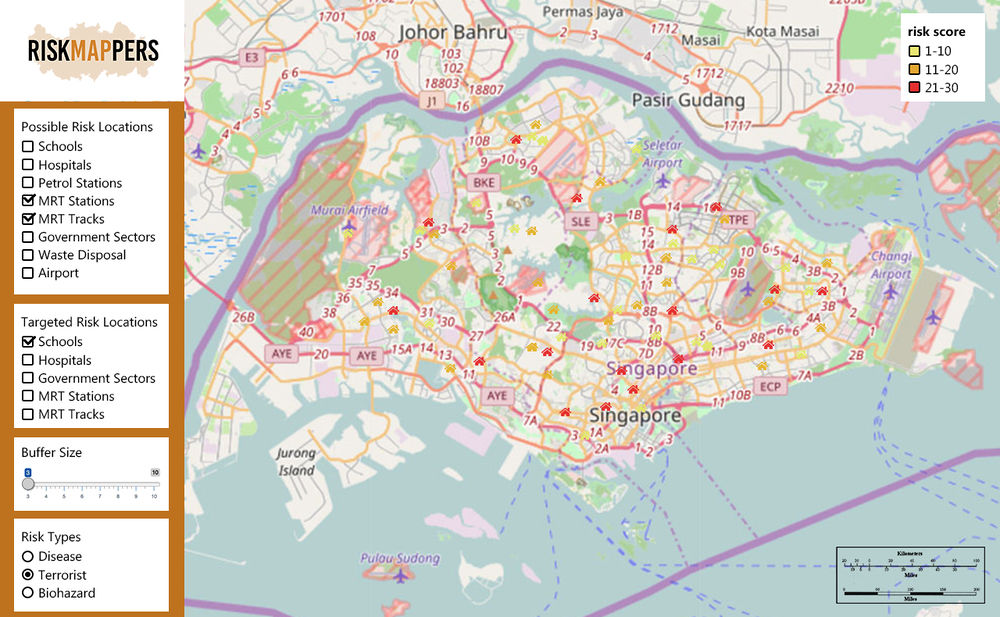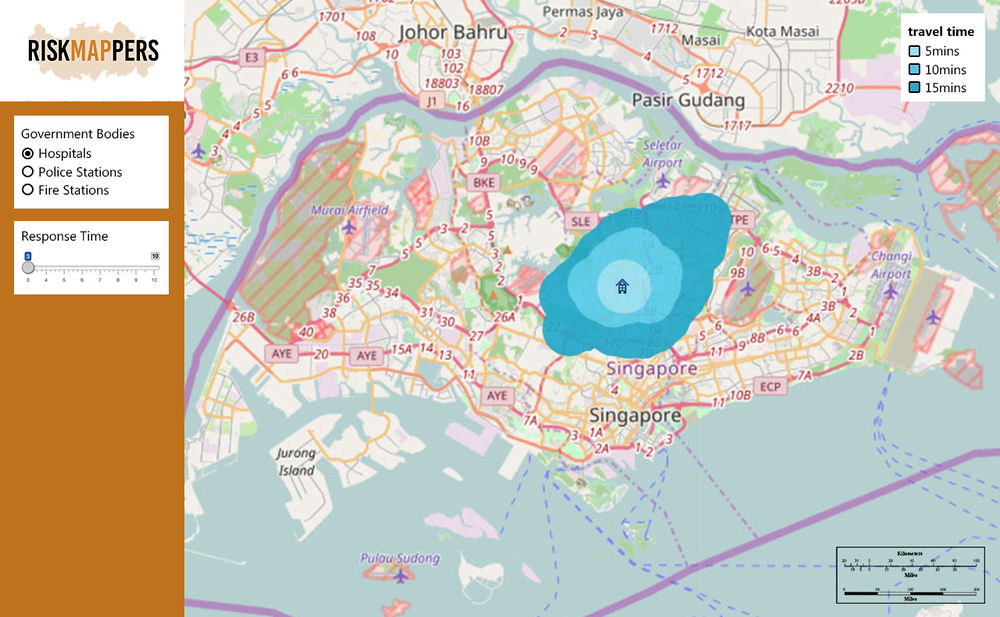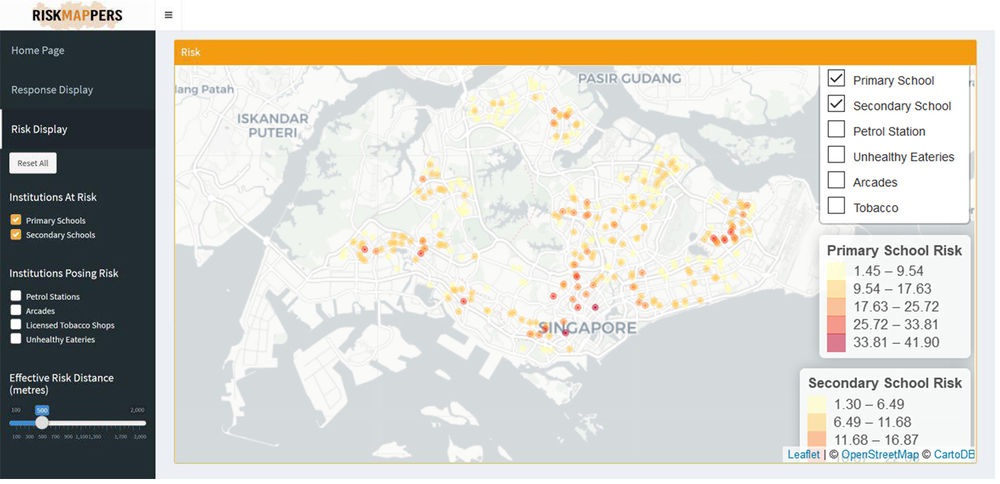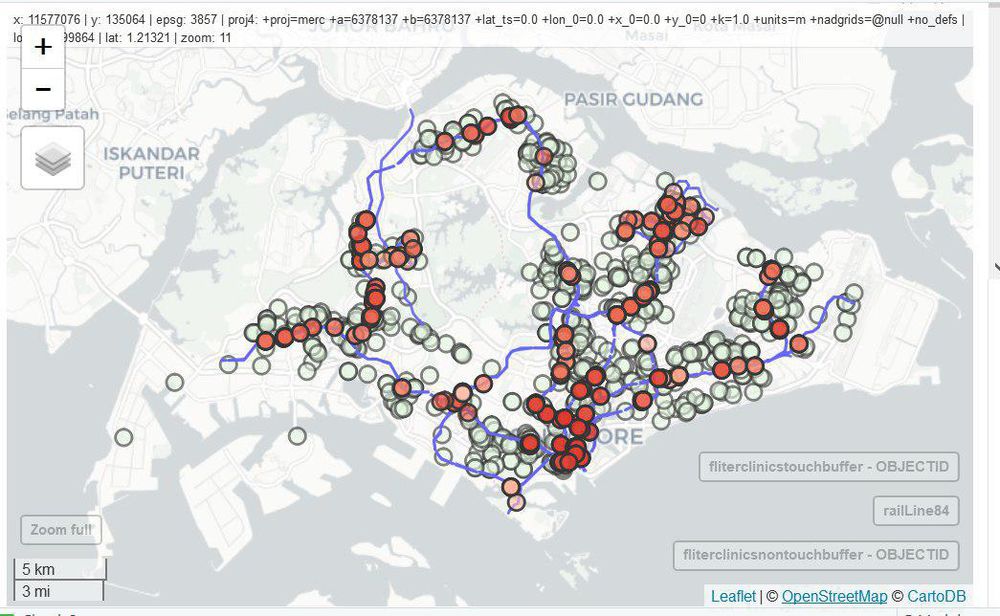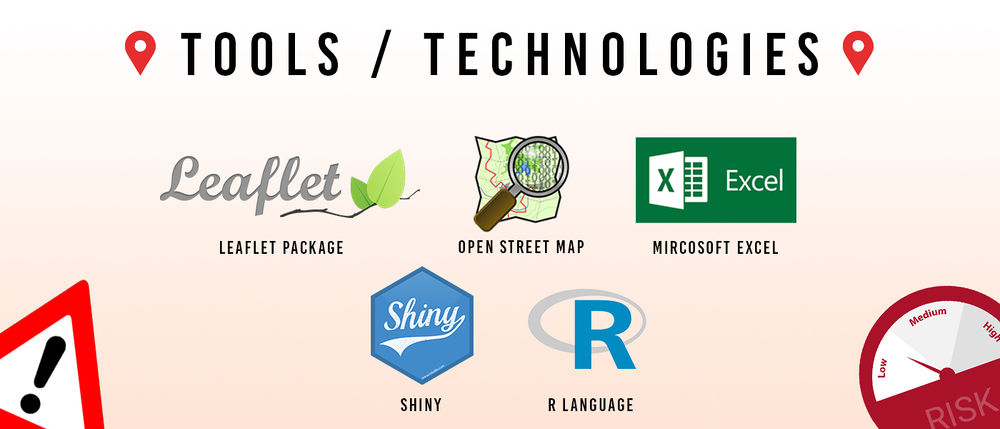Difference between revisions of "RiskMappers Proposal"
Kyfan.2015 (talk | contribs) |
Kyfan.2015 (talk | contribs) |
||
| Line 240: | Line 240: | ||
|- | |- | ||
| | | | ||
| − | + | Issue 1: Conversion of Shape File to Raster Data | |
|| | || | ||
Kaiyang | Kaiyang | ||
| Line 249: | Line 249: | ||
|- | |- | ||
| | | | ||
| − | + | Issue 1: Linking required variables from Server code to UI code | |
|| | || | ||
Kaiyang | Kaiyang | ||
| Line 258: | Line 258: | ||
|- | |- | ||
| | | | ||
| − | + | Issue 1: Set up of Raster Data based on Singapore Map | |
|| | || | ||
Kaiyang | Kaiyang | ||
| Line 267: | Line 267: | ||
|- | |- | ||
| | | | ||
| − | + | Issue 1: Mapping Data onto Leaflet | |
|| | || | ||
Kaiyang | Kaiyang | ||
| Line 276: | Line 276: | ||
|- | |- | ||
| | | | ||
| − | + | Issue 1: Calculation of Raster Data using Interpolation to show choropleth map on Singapore Map | |
|| | || | ||
Kaiyang | Kaiyang | ||
| Line 285: | Line 285: | ||
|- | |- | ||
| | | | ||
| − | + | Issue 1: Integrating Code with UI | |
|| | || | ||
Kaiyang | Kaiyang | ||
| Line 294: | Line 294: | ||
|- | |- | ||
| | | | ||
| − | + | Issue 1: Create buffer for each risk and calculate the risk score for each school | |
|| | || | ||
Kaiyang | Kaiyang | ||
| Line 303: | Line 303: | ||
|- | |- | ||
| | | | ||
| − | + | Issue 1: Select the specific of risk within the buffer for each school | |
|| | || | ||
Kaiyang | Kaiyang | ||
| Line 330: | Line 330: | ||
|- | |- | ||
| | | | ||
| − | + | Issue 2: Testing One Map API to extract location data | |
|| | || | ||
Mark | Mark | ||
| Line 339: | Line 339: | ||
|- | |- | ||
| | | | ||
| − | + | Issue 2: Conversion of One Map CSV data to Spatial data for mapping | |
|| | || | ||
Mark | Mark | ||
| Line 348: | Line 348: | ||
|- | |- | ||
| | | | ||
| − | + | Issue 2: Calculate route distance and timing of Risk from K Nearest Neighbour of the Response layer using One Map API | |
|| | || | ||
Mark | Mark | ||
| Line 357: | Line 357: | ||
|- | |- | ||
| | | | ||
| − | + | Issue 2: One Map API Extraction of Location Data to CSV files | |
|| | || | ||
Mark | Mark | ||
| Line 366: | Line 366: | ||
|- | |- | ||
| | | | ||
| − | + | Issue 2: Mapping data onto Leaflet Map | |
|| | || | ||
Mark | Mark | ||
| Line 375: | Line 375: | ||
|- | |- | ||
| | | | ||
| − | + | Issue 2: Linking required variables from Server code to UI code | |
|| | || | ||
Mark | Mark | ||
| Line 384: | Line 384: | ||
|- | |- | ||
| | | | ||
| − | + | Issue 2: Integrating Code with UI | |
|| | || | ||
Mark | Mark | ||
| Line 517: | Line 517: | ||
|- | |- | ||
| | | | ||
| − | <div style="text-align:center, text-size: 10px"><b> | + | <div style="text-align:center, text-size: 10px"><b>Issue 1: Raster Map Risk Analysis (REMOVED)</b></div> |
|- | |- | ||
| | | | ||
| Line 526: | Line 526: | ||
|- | |- | ||
| | | | ||
| − | <div style="text-align:center, text-size: 10px"><b> | + | <div style="text-align:center, text-size: 10px"><b>Issue 1: Risk to Students (NEW)</b></div> |
|- | |- | ||
| | | | ||
| Line 535: | Line 535: | ||
|- | |- | ||
| | | | ||
| − | <div style="text-align:center, text-size: 10px"><b> | + | <div style="text-align:center, text-size: 10px"><b>Issue 2: Response Time Analysis</b></div> |
|- | |- | ||
| | | | ||
| Line 553: | Line 553: | ||
|- | |- | ||
| | | | ||
| − | <div style="text-align:center, text-size: 10px"><b> | + | <div style="text-align:center, text-size: 10px"><b>Issue 1: Raster Map Risk Analysis (REMOVED)</b></div> |
|- | |- | ||
| | | | ||
| Line 565: | Line 565: | ||
|- | |- | ||
| | | | ||
| − | <div style="text-align:center, text-size: 10px"><b> | + | <div style="text-align:center, text-size: 10px"><b>Issue 1: Risk to Students (NEW)</b></div> |
|- | |- | ||
| | | | ||
| Line 575: | Line 575: | ||
|- | |- | ||
| | | | ||
| − | <div style="text-align:center, text-size: 10px"><b> | + | <div style="text-align:center, text-size: 10px"><b>Issue 2: Response Time Analysis</b></div> |
|- | |- | ||
| | | | ||
Revision as of 16:29, 15 April 2018
|
Risk in Singapore Risk and hazard are terms commonly used to describe aspects of the potential for harm caused by environmental factors and other agents. In Singapore’s endeavor to be a healthy, safe and prepared smart nation, the most important age group of the population is of children - the future generations of our country. Children and teenagers aged 6 thru 16 are in the most susceptible and impressionable years of their life and therefore, it is important for us to better understand the vicinity of institutions that younger generations attend, the key ones being primary and secondary schools. This analysis will also help parents in choosing schools while being aware of the potential risks and vulnerabilities their children might be exposed to. For the sake of scope, we have restricted ourselves to three types of risks - health (tobacco and unhealthy eateries), entertainment (arcades) and terrorist (petrol stations, as a representative of the same). We then analyse the total number of risk factors to assign a risk score to each school that is later mapped out. |
|
Geographical Risk Analysis |
Each layer represents a specific area of risk which certain institutions pose to a student. By including each layer it allows users to visualize possible risks in each locale.
|
|
Functionality |
1. Visual Risk Analysis |
|
Usage |
Our visualization allows users to comprehend how much potential risk each area is exposed to. From this information, we hope to aid in Singapore's goals of Smart City planning to take into consideration not only ease of access to the population but also the risk different institutions pose to inhabitants. |
|
Issue 1 | |
|
Issue 2 |
For now, our team's datasets are retrieved from https://data.gov.sg
This a ROUGH timeline of our entire project. Milestones indicated are according to IS415 AY1718 Project Wiki Page (Detailed timeline will be updated)
|
Function |
Developer |
Expected Completion Date |
Status |
|
Required Working Files: Sorting of SHP/KML and CSV files (get required conversion if needed) for application |
Kaiyang |
Week 10 |
Done |
|
Issue 1: Conversion of Shape File to Raster Data |
Kaiyang |
Week 10 |
Done (REMOVED) |
|
Issue 1: Linking required variables from Server code to UI code |
Kaiyang |
Week 11 |
Done |
|
Issue 1: Set up of Raster Data based on Singapore Map |
Kaiyang |
Week 11 |
Done (REMOVED) |
|
Issue 1: Mapping Data onto Leaflet |
Kaiyang |
Week 11 |
Done |
|
Issue 1: Calculation of Raster Data using Interpolation to show choropleth map on Singapore Map |
Kaiyang |
Week 12 |
Done (REMOVED) |
|
Issue 1: Integrating Code with UI |
Kaiyang |
Week 12 |
Done |
|
Issue 1: Create buffer for each risk and calculate the risk score for each school |
Kaiyang |
Week 13 |
Done |
|
Issue 1: Select the specific of risk within the buffer for each school |
Kaiyang |
Week 13 |
Done |
|
Poster |
Kaiyang |
Week 13 |
Done |
|
User Guide: PDF User Guide |
Kaiyang |
Week 14 |
Done |
|
Issue 2: Testing One Map API to extract location data |
Mark |
Week 10 |
Done |
|
Issue 2: Conversion of One Map CSV data to Spatial data for mapping |
Mark |
Week 10 |
Done |
|
Issue 2: Calculate route distance and timing of Risk from K Nearest Neighbour of the Response layer using One Map API |
Mark |
Week 11 |
Done |
|
Issue 2: One Map API Extraction of Location Data to CSV files |
Mark |
Week 11 |
Done |
|
Issue 2: Mapping data onto Leaflet Map |
Mark |
Week 11 |
Done |
|
Issue 2: Linking required variables from Server code to UI code |
Mark |
Week 12 |
Done |
|
Issue 2: Integrating Code with UI |
Mark |
Week 12 |
Done |
|
User Interface: Number Sliders (for buffering / proximity timing), Dropdownlist (for Color, Basemap) |
Mallika |
Week 10 |
Done |
|
User Interface: Set up observation on R Server Code |
Mallika |
Week 10 |
Done |
|
Backend: Pre-loading of SHP/KML/CSV files to the server |
Mallika |
Week 11 |
Done |
|
User Interface: Set up dynamic input/output and link with Map |
Mallika |
Week 11 |
Done |
|
User Interface: Home Page to explain the project's goals and descriptions |
Mallika |
Week 12 |
Done |
|
Server Development |
Mallika |
Week 13 |
Done |
|
Server Debugging |
Mallika |
Week 13 |
Done |
Most functionalities are delayed due to the requirement of completing other module's project work as the deadline is earlier. The team will be dedicating the entire 6th April to 10th April to be working on GeoSpatial Project and only GeoSpatial Project
|
Over Function (https://cran.r-project.org/web/packages/sp/vignettes/over.pdf) |
|
Using this as a reference to calculate the total risk score of each school based on whether their location is within the certain distance buffer of the risk factor |
|
Dengue Outbreak Mapping (http://outbreak.sgcharts.com) |
|
Using this as a reference to create a colored distance buffer for user to know if a location that user chose is beside a risk location. |
|
Shiny Example (http://shiny.rstudio.com/gallery/superzip-example.html) |
|
Using this as a reference to create R shiny map. |
|
Distance Length Mapping (https://rstudio.github.io/leaflet/shiny.html) |
|
Using this as a reference to create setting for response time estimation. |
|
Issue 1: Raster Map Risk Analysis (REMOVED)
|
|
Our team plans to create a dashboard for our users to run an analysis on different risk factors and how it cause to some of Singapore key locations (Such as potential Terrorist attacks on MRT Stations) and how these risk locations can affect other locations nearby such as (Government Sectors location, MRT Stations, Schools, etc). User will be able to choose the specific risk type, potential risk locations, potential nearby locations that might be affected as well as set the buffer size for the risk identified. |
|
Issue 1: Risk to Students (NEW)
|
|
Our team plans to create a dashboard for our users to run an analysis on how different risk (Petrol Stations, Tobacco Store, Unhealthy Eateries and Arcades) could affect schools within their vicinity. Risk score will be calculated for each school. Users will be able to look at the highest and lowest risk score schools. Users will also be able to find out specific risk and their location for each school on in a table form. |
|
Issue 2: Response Time Analysis
|
|
Our team plans to create a dashboard for our users to run an analysis on different government bodied (Hospital, Police Station, Fire Station, etc) location and their ability to respond to emergency events at certain high risk location. User will be able to select a specific government body, response time and risk location to reach. |
|
Issue 1: Raster Map Risk Analysis (REMOVED)
|
|
Our team plans to create a dashboard for our users to run an analysis on different risk factors and how it cause to some of Singapore key locations (Such as potential Terrorist attacks on MRT Stations) and how these risk locations can affect other locations nearby such as (Government Sectors location, MRT Stations, Schools, etc). User will be able to choose the specific risk type, potential risk locations, potential nearby locations that might be affected as well as set the buffer size for the risk identified. You may download our HTML file here, https://drive.google.com/file/d/1Lh5BZ8vJY7OM-P5F2Fcpz19wg4oWSzG6/view?usp=sharing |
|
Issue 1: Risk to Students (NEW)
|
|
Our team plans to create a dashboard for our users to run an analysis on how different risk (Petrol Stations, Tobacco Store, Unhealthy Eateries and Arcades) could affect schools within their vicinity. Risk score will be calculated for each school. Users will be able to look at the highest and lowest risk score schools. Users will also be able to find out specific risk and their location for each school on in a table form. |
|
Issue 2: Response Time Analysis
|
|
Our team plans to create a dashboard for our users to run an analysis on different government bodied (Hospital, Police Station, Fire Station, etc) location and their ability to respond to emergency events at certain high risk location. User will be able to select a specific government body, response time and risk location to reach. |
|
No. |
Key Technical Challenges |
Description |
Proposed Solution |
Outcome |
|
1. |
Unfamiliarity with R |
The team plans on using R and creating an R dashboard for the project. |
- Initial hands-on experience during class - DataCamp course on R shiny and geospatial analysis - Independent learning on R - Independent learning on R - Peer learning and sharing |
(Add Later) |
|
2. |
Data Cleaning and Transformation |
The data collected is generally in different formats. The scales of the data, the coordinate reference system etc. may all be different. |
Having a systematic process while working together in order to maximise efficiency e.g. taking turns to clean, transform and perform checks on the data to ensure accuracy. |
(Add Later) |
|
3. |
Integrating Relevant Data from Multiple Sources |
Narrowing down data collected to what is relevant to our project is imperative before we can begin its analysis. |
Working together and meeting up to understand and decide on what data to extract, to analyse or to reject. |
(Add Later) |
|
4. |
Information Presentation |
Determining the most effective way to visualise and display the data in an interactive format is of essence. It is necessary that the most important information is easily discernible from the map. |
Gain exposure to different mapping techniques. Follow and revisit techniqes explored in class Also look at datacamp courses. |
(Add Later) |
|
No. |
Website Name |
URL |
|
1. |
Innovative Solutions for a Smart City |
https://www.smartnation.sg/resources/innovative-solutions-for-a-smart-city |
|
2. |
Smart Nation Leveraging on Technology to Improve our Urban Environment |
https://www.smartnation.sg/initiatives/Living/leveraging-technology-to-improve-our-urban-environment |
|
3. |
Topographic Map |
|
|
4. |
Shiny Widget |
https://shiny.rstudio.com/gallery/widget-gallery.html https://rstudio.github.io/leaflet/shiny.html |
|
5. |
Shiny Dashboard |
https://rstudio.github.io/shinydashboard/ https://www.rstudio.com/resources/webinars/dynamic-dashboards-with-shiny/ http://shiny.rstudio.com/gallery/superzip-example.html |
|
5. |
Leaflet Notes |
We appreciate and cherish all comments. If you have any suggestion on how to improve our project. Please help us by keying in your name and comment. Don't worry, we want to know your name so that we can thank you and ask for more details. And we don't bite. (:
|
No. |
Name |
Date |
Comments |
|
1. |
Insert your Name here |
Insert Date here |
Insert Comment here |
|
2. |
Insert your Name here |
Insert Date here |
Insert Comment here |
|
3. |
Insert your Name here |
Insert Date here |
Insert Comment here |
